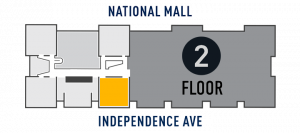In the 1970s, NASA inaugurated the Landsat series of satellites to study the Earth from space. The program demonstrated the practical benefits of such research: for the first time the Earth's natural resources--land, water, and vegetation--could be mapped and studied continuously and on a global basis.
The Earth Resources Technology Satellite (later renamed Landsat 1), launched in 1972, was the first of these satellites. One of the main instruments was a Return Beam Vidicon (RBV) camera, which provided provided black and white images of the Earth.
This artifact, a vidicon (or television) tube, was the key component of this instrument system. The RBV used three vidicon tubes, each gathering data at different wavelengths.
Mr. Abe Schapf donated this artifact to the Museum in 1975.
Display Status
This object is on display in One World Connected at the National Air and Space Museum in Washington, DC.

Object Details
Country of Origin
United States of America
Type
SPACECRAFT-Uncrewed-Instruments & Payloads
Manufacturer
RCA Astro Electronics
Dimensions
3-D: 21.3 × 5.7cm (8 3/8 × 2 1/4 in.)
3-D: 0.2kg (0.4lb.)
Materials
Glass, ferrous alloy, white metal alloy, copper alloy, unidentified plastics, paint, black ink
Inventory Number
A19761829000
Credit Line
Gift of Abe Schapf
Data Source
National Air and Space Museum
Restrictions & Rights
Usage conditions apply
For more information, visit the Smithsonians Terms of Use.